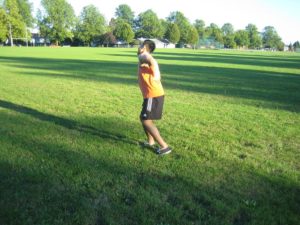Lumbar spondylosis is a degenerative spinal condition that affects the lumbar region of the spine throughout the lower back. Individuals over 40 years of age face the highest possibility for the condition with symptoms such as back pain or stiffness in the morning.
Aging process
One of the usual causes of lumbar spondylosis is natural aging. As the body deteriorates, the discs amidst the spinal vertebra steadily degrades. The deterioration of the spinal disc and cartilage lessens the available space between every vertebra.
Consequently, the vertebrae inside the lumbar region of the back might wear out, revealing the nerve roots that travel throughout the spinal column. Exposure of the nerve might result to nerve inflammation which causes the symptoms of lumbar spondylosis such as back pain.

Hereditary anomalies
Some individuals might end up with lumbar spondylosis due to genetic characteristics. These anomalies might cause some individuals to have an unusually thin vertebra that is prone to spondylosis.
Lifestyle choices
There are some lifestyle choices such as smoking that increases the risk for ending up with lumbar spondylosis. It is important to note that cigarette smoking can detrimentally affect the amount of water inside the vertebral discs.
The low amount of water inside the vertebral discs can increase the rate of deterioration of these discs which leads to lumbar spondylosis.
Overuse or injury
Damage to the lumbar spine can lead to spondylosis in some individuals. The damage can force the vertebral discs out of their proper alignment. Once this occurs, an individual is at higher risk for ending up with lumbar spondylosis.
Overusing of the back during strenuous physical activities such as football or gymnastics can worsen the strain on the lumbar vertebra. The additional strain can lead to damage to the vertebra such as disc slippage or fracture which leads to the condition.
